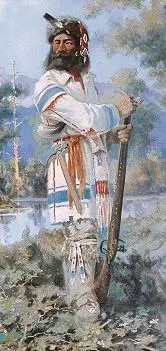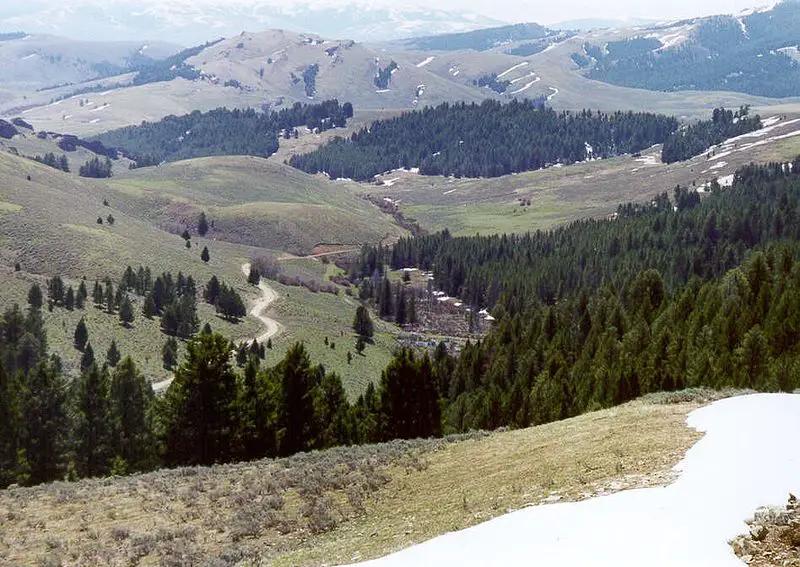Headed West
During the time that the Lewis and Clark expedition spent at Fort Mandan, they came across a French trapper named Touissant Charbonneau and his 16-year-old Shoshone wife, Sacagawea, who had been captured by the Hidatsas as a young girl. The team hired them as translators, and in the Spring, the expedition set out for the west.
Sacagawea became one of the most valuable members of the team, helping them with translations and survival for the rest of the trip.

- To prepare for the next leg of their journey, the team had sixteen men that had created six canoes from cottonwood logs. It took them 22 days to complete the canoes, and the other men were making the rope, clothes, cured meat, moccasins, and battle-axes that they would need for their trip. William Clark devoted his time to perfecting the new map, and Meriwether Lewis prepared zoological, botanical, and mineralogical items to send back to President Jefferson.
- On April 7, 1805, the Corps of Discovery took their six canoes and the two smaller boats called “pirogues” and headed towards the Rocky Mountain barrier via the Missouri River. They sent out another group of men that were accompanied by friendly Native Indians downriver to meet with President Jefferson.
- They continued on their journey, penetrating country that was around two thousand miles in width and going where no white person had ever been. The journals recorded that they traveled in a magnificent country, and when they came across a huge waterfall, they decided to spend two weeks camped out. Continuing their travels, they met animals that had never been seen, including bighorn sheep, grizzly bears, pronghorn antelope, and amazingly huge herds of buffalo that seemed to be everywhere.
- However, the team was falling behind in their schedule, and even though they were at places father than anyone could have imagined, they needed to pick up the pace. The expedition knew that their goal was to try to find the Northwest Passage, and there were a number of times that Lewis thought he had found the continental divide, only to be let down.
- Each time Lewis climbed up, expecting to see the ocean, he was greeted with the Great Plains and a river. It was late in July before the expedition came near the Three Forks of the Missouri River that headed towards the southwest. It was Sacagawea that realized that they were at Beaverhead Rock, which is north of what is known today as Dillon, Montana. She knew that they were close to her home tribe of the Shoshone.
- The team needed to find Native Indians so that they could get horses, and they sent a scouting party of three men ahead. By August 12, Lewis came to the Lemhi Pass (current border of Idaho and Montana), and from the top, he thought he would see a big river that flowed straight to the Pacific Ocean. Unfortunately, what he saw were more mountains and no direct waterway.

- Lewis and the men had found the Continental Divide, which is the Rocky Mountains, but they were still almost five hundred miles away from the Pacific. With the summer weather fading fast, they knew they had to take action, and the answer came the very next day when they came upon a Shoshone village.
- Although the Shoshone people had never seen a white person, they were also not very friendly. Their suspicion ended when they saw the main party show up with Sacagawea. She immediately knew the chief of the tribe because it was her brother. The tribe was incredibly happy that the expedition had brought home their long lost member, and they welcomed Lewis, Clark, and the entire expedition with a big celebration.
Sacagawea told the tribe about the dire need for horses as well as guides, and the Shoshone tribe sent members with them to help.
They informed Lewis and Clark of a hunting trail that was rather steep, but it offered a bit of a shortcut for them.
They decided to take it because the frost was already appearing on the ground.



